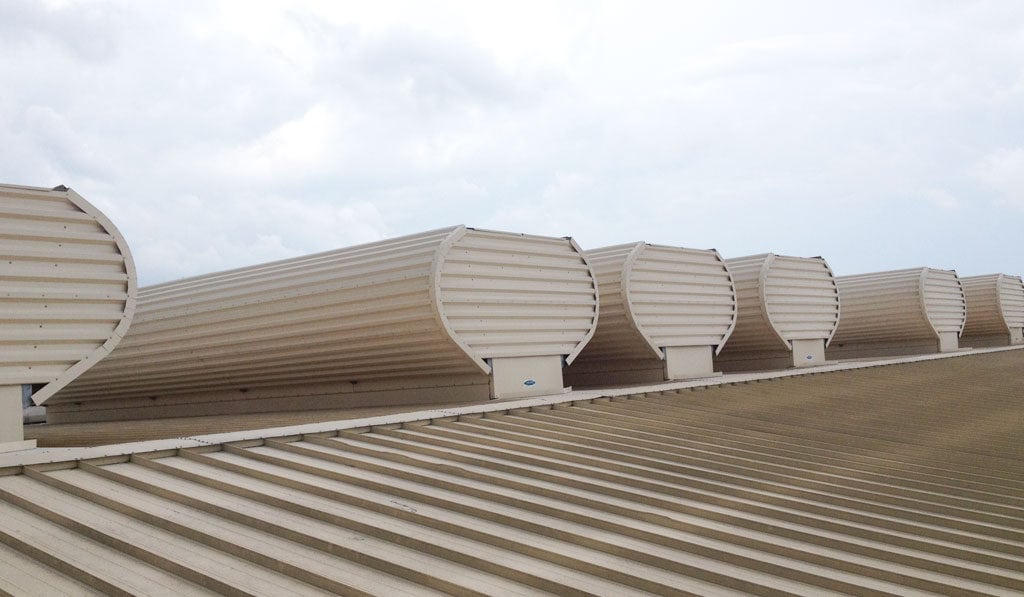Energy Savings – Powering 22,900 Homes
In 2016 the MoffittVent saved enough energy to power 22,900 homes! That is more than the number of houses in Moffitt HQ’s hometown of Jacksonville Beach, Florida. Expressing the savings this way really shows the impact natural ventilation can have on energy savings and the environment.

Natural ventilation involves cooling any building or area of a building without the use of electricity. In lieu of power fan equipment, it instead uses passive air flow systems. Exhaust fans can consume more than 30,000 kilowatts (kW) of power a year each. A natural ventilator, on the other hand, will consume no energy and exhaust the warm air naturally. With a natural ventilator, the energy savings are immediate, and the impact is significant. If you have noticed your energy bills are higher than usual, you could investigate a site like Simply Switch who can help you find a cheaper energy plan by switching providers. This can help you save money on future bills.
The Impact of the MoffittVent™
In the 55+ years in which Moffitt has been doing business, it has helped save millions, if not billions of kilowatt-hours (kWh). Instead of using countless amounts of energy to run exhaust fans, a passive natural ventilator saves it. In fact, in just the last 20 years alone rooftop exhaust device has saved over 2 billion kWh of energy! That is a significant amount of home energy savings.
When consider exactly how much energy, and money you can save with natural ventilation, the results are staggering. Every kWh you save on ventilation means more energy that is available elsewhere. Whether that’s powering homes or even your own factory, its saved energy. This reduces the environmental impact as well. Less energy used to cool means a reduced carbon footprint and energy savings overall.
The MoffittVent Investment
A single MoffittVent lasts a long time. Unlike a powered exhaust fan which will last 5 – 10 years if you’re lucky, a MoffittVent can last for 25 – 30 years or longer. We’ve seen 50 year old units still in great shape to this day. No belts to tighten, to fan blades to fix, and no units to replace. So not only are you replacing the fans when you first install the unit, you’re replacing the replacement fans too.
Better yet, a single ridge mounted ventilator replaces several fans. It replaces, even more, fans over its lifetime. So, you’re not just saving the energy used to power one fan, but often a dozen or more fans. This is energy and money that adds up fast.
Choosing a Moffitt natural ventilation device, like a large exhaust ventilator can help save energy for both you and the planet. Join the energy savings revolution today by switching to natural ventilation.
Methodology
The statistics above include data from MoffittVent™ units installed between twenty years ago through last year. However, the figures above represent just the emissions saved in the 2016 calendar year. As each unit continues to operate year after year, often for decades, it continues to realize energy savings each and every year.
For instance, a typical 180 ft2 unit installed in 1993 would have realized savings of over 70,000 kWh in the first year alone. In the each of the following 20 years, which would have been another 70,000 kWh each year. After twenty years, that is an energy saving totaling 1.4 million kWh!
Calculation Assumptions – All calculations above assume fans are set to run for 24 hours a day, 365 days a year. This is typical for many types of industrial facilities. The above figure also does not consider costs related to repairs or replacement of fans or facilities that have been closed or remodeled since the original ventilator(s) were installed.
SOURCES
http://www.eia.gov/tools/faqs/faq.cfm?id=74&t=11
http://www.epa.gov/cleanenergy/energy-and-you/http://www.epa.gov/cleanenergy/energy-resources/calculator.html#results
http://www.verus-co2.com/
